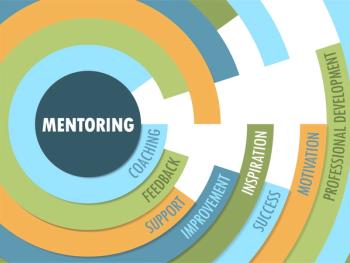
Avoid “Shots in the Dark” to Maintain Pristine Professional Boundaries
Here’s how to stay professional in difficult situations.
Psychopharmacologists and psychotherapists are in no way immune to the kinds of lapses in professionalism that from time to time imperil the licenses and careers of other health professionals.1 In particular, effective management of appropriate professional boundaries is an integral and ongoing task for mental health professionals throughout our careers.2 Following presentation and discussion of a fictional anecdote, I will conclude by proposing a typology for the range of professional boundary challenges.
Shots in the Dark: A Realistic Imagined Boundary Violation Anecdote
“Raquelle” and “Kobe,” two PGY-5 psychiatry fellows in a prestigious university-based mental health fellowship program, met at a poorly lit bar near the campus after work on a Friday. They were colleagues—acquaintances who were in the process of becoming work friends. As they finished up a shared half-gallon pitcher of beer, the waiter brought them each a shot of tequila that neither of them had ordered. He explained that this was a gift from a young woman seated alone at the bar. Raquelle looked up and discerned that the gift-giving bar patron appeared to be a high-functioning female graduate student who was a clinic patient under her care. She smiled and waved to the patient, and then discussed with Kobe whether or not it was appropriate for them to drink the shots. Raquelle suggested that they send the tequila back; Kobe argued that to do so was overkill: “Why kick a gift horse in the mouth? She’s already paid for the drinks anyway.” He downed the shot—was it a double, perhaps?—and then pointed out that the patient was gone. After Raquelle downed the other shot, the patient, who had been in the restroom, pulled up a chair and joined them at their table.
Kobe was buzzed, Raquelle was becoming more and more intoxicated by the minute, and her patient was clearly inebriated. Some of the free-wheeling discussion involved the patient’s frustration with being single, and at one point, she deliberately touched Kobe’s thigh. He took care to move her hand off his leg and summoned an Uber, which they took together to the patient’s apartment. They helped her negotiate her way to building’s entrance and bid her farewell. They then proceeded to Raquelle’s apartment, and Raquelle asked Kobe to help her get inside. She invited him in, and they decided to have sex. Things progressed quickly until Raquelle suddenly asked Kobe to stop. He did so immediately and left very shaken up. Raquelle did not return Kobe’s calls that weekend.
On Monday the patient cancelled all of her scheduled appointments and lodged a complaint with the clinic director. After the clinic director interviewed Raquelle and Kobe, first separately and then together, she put the 2 of them on administrative leave and contacted the HR department and legal counsel. It was decided to confer with the medical board about “a couple of young physicians who crossed some lines.”
Questions Raised by the Anecdote
The messy, unfortunate, and completely avoidable situation that these 2 young physicians found themselves in raises a number of important questions:
1. Is this a spurious matter that is likely to be sorted out promptly without having a negative impact on the career trajectory of these PGY-5 psychiatry fellows?
2. What boundary violations occurred?
3. How does the physicians’ drinking factor into our assessment of these boundary challenges, and to what extent does this anecdote indicate a drinking problem that should likely be addressed?
4. What kind of legal exposures exist in this kind of case?
5. What lessons can be taken away from this situation? If the fellows could turn the clock back and proceed differently, what might they have changed?
Perspective of a Psychiatrist With Experience Assisting Physicians With Professionalism Challenges
From the vantage point of having assessed hundreds of physicians with professional boundary challenges, my lived professional experience suggests the following answers to the 5 questions (restated, in brief):
1. A spurious matter without a negative impact?
Not in the least! Possessing an active medical license is more of a privilege than a right, and licensed physicians are expected to face their patients, and the public, with exemplary professional behavior. When a chain of events prompted by flawed decision-making culminates in witnessed behaviors that can readily be deemed unprofessional, complaints to the licensing board, employment actions, and lawsuits may ensue. Once any or all of those “cats are out of the bag,” the involved physicians typically find themselves caught up in a complex, time-consuming, and pricey medicolegal matter that may take months or even years to resolve. In colloquial terms, it is almost impossible to get such a “cat” back in the bag. When significant professionalism concerns arise publicly, the burden of proof typically shifts to the physician, who then needs to demonstrate that they are not at risk of behaving unprofessionally in the future. It is very, very difficult to “prove a negative” to the satisfaction of risk-averse and publicity-sensitive regulatory bodies and employers.
2. What professional boundaries were violated?
Drinking heavily in a public setting where crossing paths with patients may likely occur is a bad idea, because alcohol’s disinhibiting effects promote bad decision-making. When psychiatrists accept gifts of various sorts from patients, they may find themselves entering onto a slippery slope without even realizing it.3 In this case, the gift of potent drinks that raised the blood alcohol concentrations of 2 psychiatrists became extremely problematic.
Also, alcohol-fueled intimacy between current work colleagues is never a good idea and has the potential to blow up.
3. What about drinking and the role of alcohol in this professionalism lapse?
Psychoactive substance misuse should always be considered a contributing factor when evaluating unprofessional behavior in health professionals.4 The anecdote demonstrates how physicians with a casual, if not cavalier, attitude about drinking sometimes find themselves “busted” by the likes of medical leaders, HR departments, employers, organizational attorneys, and regulatory bodies. Public drinking by physicians is potentially problematic, especially when it takes place in a setting where meeting up with one’s patients is not unlikely. Free shots of high-potency alcohol were the tipping point in this anecdote, and accepting them as a gift from a patient was extremely problematic. The shots may not have been consumed if the pitcher of beer had not preceded them.
The alcohol-fueled encounter at the table was a clear boundary violation that set other problematic interactions in motion. The Uber ride with the patient and the abrupt discontinuation of treatment come immediately to mind. The culmination of this seemingly innocent attempt to “have a drink after work” was a problematic sexual encounter between 2 physicians “under the influence.” Career-derailing criminal charges sometimes emerge in situations like the one described. In some states, one or both of these physicians might be referred to the state’s physician health program, and after careful assessment, recommendations of specialized treatment and abstinence monitoring may ensue.
4. Legal exposure?
Physicians who behave unprofessionally, for whatever reason, may jeopardize their training and employment status, as well their ability to be credentialed and maintain a “clean” license. In this anecdote, the patient who bought the shots has the potential to assert that she was victimized by one or both psychiatrists, and a lawsuit—spurious or not—is possible. Allegations of rape are sometime made when a more intoxicated individual asserts that a less intoxicated individual took advantage of them sexually. Physicians charged with felonies, even without a conviction, find it extremely difficult to progress in their careers.
5. What lessons can be learned?
-Avoid drinking in settings close to work.
-Drink sparingly, especially when in public. Out of an abundance of caution, health professionals who are safe to consume alcohol may want to reduce the NIAAA’s recommended daily and weekly maximum drinking limits by as much as half.5
-Before accepting a gift from a patient, ask yourself what could go wrong. “No thanks” is the safest default stance. Recreational substance use has no place in the relationship between mental health professionals and patients.
-Initiating sexual involvement with a colleague is a decision not to be taken lightly. It should be considered with great care and forethought. It should never take place if a power differential exists between the 2 individuals.
-Sexual involvement that is fueled by recreational substance use is fraught with complexity. It may lead to potentially catastrophic unintended consequences.
Concluding Comments on the Scope and Range of Professional Boundary Challenges
Historically, the private practice of psychiatry, psychotherapy, and psychoanalysis has at times occasioned egregious boundary violations.6 In our current hyper-technological era with an environment of rapid-paced and commodified service delivery, health professionals in all specialties and disciplines are at risk of stepping or veering out of bounds. The risk extends beyond patients; it includes colleagues, subordinates, and the public at large. Medical boards throughout the United States have investigated and disciplined physicians for serious digital boundary violations, some of which may have been “innocent” from the physician’s perspective. We are well advised to consider the boundary-violating potential of all our online communications.7
Our profession calls on us to establish trust and rapport with each patient. In order to help patients, we hope that they will communicate openly with us about deeply personal situations, behaviors, thoughts, and feelings. The art of psychiatry involves mastering the ability to conduct in-depth interviews and conversations with patients in a caring and nonintrusive way. This task is inherently demanding and may even be onerous at times. Consequently, it may help us to assume that boundary challenges are in the air during each and every mental health encounter.
Professional boundary issues likely exist on a continuum. This is derived from the work of Gutheil and Gabbard, who distinguished between boundary crossings and violations.8
Professional Boundary Continuum
Typically, we are most familiar with boundary issues that involve communications, behaviors, or actions with sexual and/or intimacy content. Outside of the interrelated realms of sexuality, intimacy, and seductiveness, there are numerous nonsexual domains where boundary challenges exist. The full range of sexual and nonsexual boundary violations, and how to prevent them, is covered in a 2008 book by Gutheil and Brodsky.9 Although some individuals’ boundary issues may be predominantly sexual or purely nonsexual, individuals with a tendency to “cross the line” may manifest boundary slippage in multiple domains. As in the anecdote we started with, it is not uncommon for slippage, crossings, and violations to occur in conjunction with substance misuse (Figure). PBI Education, an established professional boundary remediation program that focuses on health professionals, provides a list of boundary problems as common reasons for referral, which can be seen in the following section.10
Common Reasons for Referral to a Professional Boundary Remediation Program
-Addictions (chemical, behavioral [ie, gambling, pornography, etc])
-Dual relationships (inappropriate financial, business, or nonsexual social relationships, including with coworkers or trainees; prescribing to friends, family, or coworkers)
-Failure to use a chaperone when indicated or requested
-Inappropriate use of social media, text, or email with patients/significant third parties, coworkers, or students
-Lending or borrowing money, or giving gifts to coworkers, students, or patients or their significant third parties
-Practicing outside of scope
-Sexual boundary violations (examination of sensitive body areas without gloves, sexualized language, looks, or physical contact even if consensual with current or former patients, coworkers, students, or patients’ significant third parties)
-Supervisory issues (inadequate supervision/delegation, insubordination)
Concluding Thoughts
A very wise hospital attorney once advised successive classes of psychiatry residents to avoid professional jeopardy by “imagining the headline.” As we face patient after patient, encounter after encounter, and boundary challenge after boundary challenge, we are well-advised to consider the various slippery slopes that present themselves in the course of our engagement with every single person. Some might say it has never been easier to slip and find yourself at the bottom of a steep hill, bruised and unable to get right back up. It is not a small accomplishment to connect with each patient and provide the help that they need while, at the same time, staying above reproach. Do not be shy about asking for input from trusted mentors if you find yourself starting to slip.
Dr Adelman is a coaching and consulting psychiatrist and is board-certified in psychiatry, addiction medicine, and coaching (BCC). He launched
References
1. Roberts LW, Hoop JG, eds. Professionalism and Ethics: Q & A Self-Study Guide for Mental Health Professionals.American Psychiatric Publishing; 2008.
2. Friedman SH, Martinez RP.
3. Brendel DH, Chu J, Radden J, et al.
4. Reynolds NT.
5. US Department of Health and Human Services; National Institutes of Health; National Institute of Alcohol Abuse and Alcoholism. Helping Patients Who Drink Too Much: A Clinicians’ Guide. 2005. Accessed August 24, 2022.
6. Gabbard GO, Martinez M.
7. Sabin JE, Harland JC.
8. Gutheil TG, Gabbard GO.
9. Gutheil TG, Brodsky A. Preventing Boundary Violations in Clinical Practice. Guilford Press; 2008.
10. PBI Education Professional Boundaries Course. PBI Education. Accessed August 24, 2022.
Newsletter
Receive trusted psychiatric news, expert analysis, and clinical insights — subscribe today to support your practice and your patients.

















